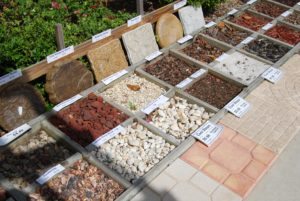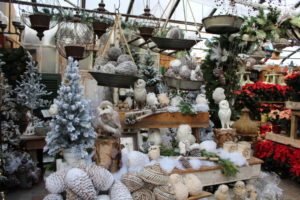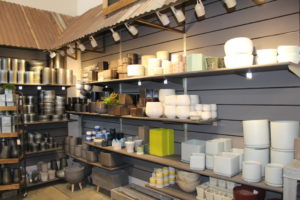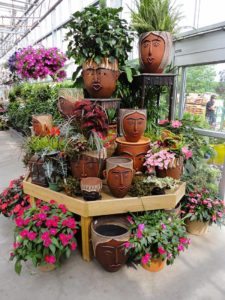Getting Customers Ready For Spring
Spring is an important time for pond keepers, especially those in Northern climates, who may need advice on making a smooth transition into the warmer months. When preparing for spring, it’s important for pond keepers to have a plan that includes fish, equipment and water care guidelines to help them make appropriate purchasing decisions about pond products and make the seasonal transition a success.
Fish Care Warm-Up
Fish are at high risk when the seasons change and substantial loss can occur because of it. Not only should you educate customers about transitioning fish, but you should make sure your own stock is ready for the change.
Water quality. Like humans, many health problems occur in fish when the immune system is run down or weakened, as is the case in early spring as fish begin to transition out of a semi-hibernation state. Water quality at this time is particularly critical. For example, excessive ammonia (greater than 0.25 mg/liter) can cause fish to show severe signs of irritation and occasional reddening on the skin and fins. Likewise, raised nitrite levels (greater than 3.0 mg/liter) also can be toxic to fish and lead to irritation of the gill and skin membranes and a reduced ability of blood to transport oxygen.
These water pollutant problems are relatively easy to overcome. A large partial water change using de-chlorinated tap water (or neutralizing it with water treatments) will immediately dilute the problem and give pond keepers time to identify the cause.
Parasite infestation. As fish awaken from their winter dormancy, they are susceptible to parasite infestation. In the spring, fish should be monitored for signs of fungus or a gray, slimy coating on the fish skin that may indicate infection. Fish also may scratch against underwater objects, which is another symptom of parasitic infection or water quality problems.
Any affected fish should be placed in a separate container and treated with a suitable remedy that controls parasites, bacteria and fungus. It is also advisable to add a general external parasite remedy to remove any parasites before they adversely affect fish.
Nutritional needs. With regard to nutritional needs, recommend adhering to a seasonal feeding cycle that uses proper feeding formulas for each season and promotes a balanced diet for optimum health since pond fish require the right combination of protein, fats, fiber, minerals and vitamins throughout each seasonal transition.
During the winter months when water temperatures are below 50° F, a fish’s metabolism slows, and its ability to process food is greatly reduced. As spring approaches, remind fish owners to closely monitor pond water temperatures and not to feed the fish until the water temperature rises above 39° F and the fish become active. If fish aren’t active enough to rise to the surface, it is a good indication they should not be fed yet. Generally, pond owners should avoid disrupting any fish that are still in a state of dormancy.
Once the temperature reaches 39° F, it is safe to slowly introduce a wheat germ-based food, which is easily digested. Later, as the temperature rises above 50° F, pond keepers can resume feeding higher protein foods 1-3 times daily to help maintain energy for active fish.
During any feeding season, it is extremely important to recognize the significance of quality foods. Feeding high-quality food results in optimal nourishment with minimal waste, which affects water quality and fish health and increases maintenance.
Equipment Check
Frost damage is a key concern during the early spring, especially if the previous winter has been harsh. Now is the time to be on the lookout for loosened edging, frost-affected pipe work or damage to manmade waterways such as streams, waterfalls and waterspouts. Fixing these problems now will allow pond keepers to concentrate on more important matters when temperatures rise.
Pond deicers and filters are two common pieces of equipment that require seasonal attention. Pond deicers can be removed from the pond once the danger of frost has passed. Pond keepers should clean and dry deicers before storage to ensure good condition for next winter. If a sudden cold spell occurs after removal, this will not harm pond life providing ice isn’t present for more than one day.
Likewise, if the pond filter was off during the winter, it should be cleaned and restarted in early spring before the fish are fed on a Á regular basis. If the pump was turned down and raised during the winter, it can be lowered and turned up before regular fish feeding begins. Once the filter is restarted, advise checking water quality over the next few days to ensure no problems occur. Getting the equipment up and running at least 1-2 weeks before feeding begins will help re-establish the pond with minimal stress on its inhabitants and reduce the danger of disease.
Ideally, all pond equipment, including pond liners, should be checked for leaks, loose fittings or other signs of wear before removal or installation.
Water Wake-Up
Spring is a good time to recommend changing some of the water in the pond, removing any accumulated debris and using a water conditioner to neutralize the added tap water so it is safe for fish. However, water temperature is still very low, so any cleaning and maintenance jobs should be performed quickly without distressing the fish.
Spring also brings a natural increase in algae, which grow quickly in higher water temperatures. Algae blooms (green water) can appear suddenly in early spring since nutrient levels in the pond are high and competition from plants is low. To control green water, string algae and blanket weed, use a pond algaecide throughout the season as needed.
Rising water temperatures and longer hours of daylight will also stimulate new growth of many aquatic plants. As long as the danger of serious frost has subsided, shallow marginal plants moved to deeper water for the winter should be moved back to their original growing positions on marginal shelves or shallow areas of the pond. Thriving plants will further aid algae reduction. While little seems to be happening with lilies and deep-water aquatics at this time of year, it is a good time to begin deciding their final positions for the coming summer to ensure fewer disturbances when they are establishing later in the spring.
Ultimately, preparing a pond for spring doesn’t have to be a seasonal headache. Providing your customers with some simple spring preparation guidelines is the key to maintaining a healthy pond into the spring and the whole year through.


















 Videos
Videos





